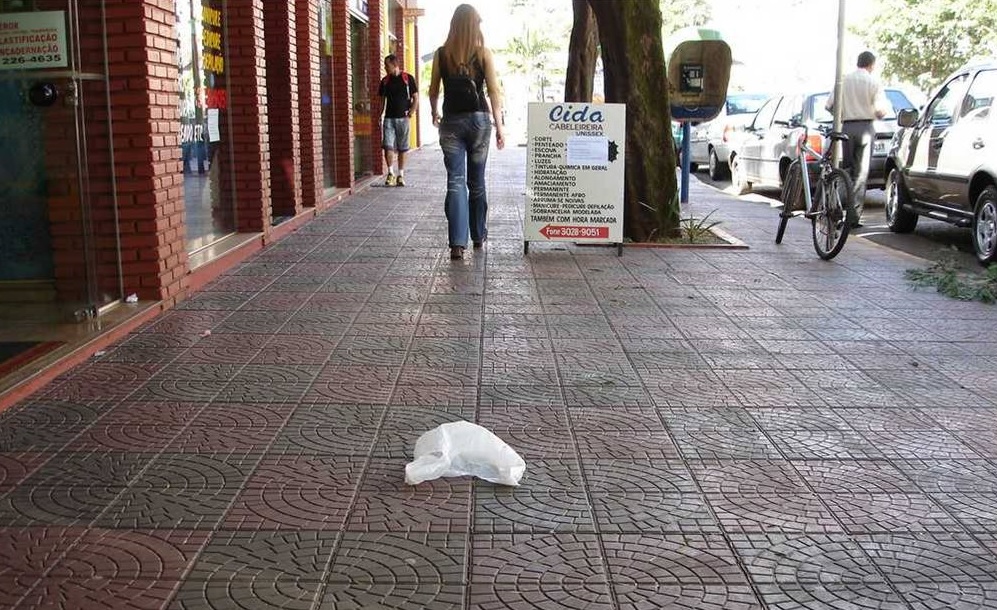Entrevista concedida pela FUNVERDE para a revista HM! sobre as malditas sacolas plásticas de uso…
Against incineration

Why waste incineration is wrong
Waste incineration is like controlling the population through euthanasia before birth control. It’s wrong because it’s trying to control the problem, before preventing the cause. Most wise people recognise that prevention is better than cure, so how can waste incineration be a viable option?
If we look deeper into the problem of production and consumer waste, we see that its a monster that has got out of control. We are producing so much and so fast, that slowing it down and reducing waste is not enough. We also need to get rid of it more efficiently and stop contaminating the environment by burying rubbish in the ground. Incineration answers the problem of reducing the bulk of waste by 95-96 %, depending upon composition and degree of recovery of materials. Incineration is therefore at a superficial level, a viable solution.
The argument for incineration focusses on providing an immediate solution to reducing landfill waste burial and mitigates the toxic after effect by pointing to possible solutions for unwanted bi-products, such as reprocessing of leachate and gas scrubbing. The cost of post treatment like this is high and its effectiveness is uncertain for technical reasons. Some medical waste is in fact very suitable for incineration as the high temperatures reached are sufficient to sterilise the waste and remove the biological hazard. In addition, some incineration processes may be linked to power production by utilising the heat generated. Overall, there is undoubtedly a niche market for incineration, but not as a panacea to mass waste reduction.
Unfortunately, waste incineration comes with its own environmental problems, as well as technical issues and dubious cost effectiveness. Incinerators produce greenhouse gases like CO2, and also heavy metals, particulates, sulphur dioxide, acids, furan and dioxins. Although incineration may reduce the bulk of waste, by burning it away, the toxic by-products produced are no longer bound to stable materials and maybe freely released into the environment as gasses and leachate. Waste mass is reduced, but at a high cost of greater environmental pollution. The wider goal of reducing toxic contamination and sustaining environmental systems is ultimately defeated through incineration.
Taking a wider view of post consumer and post industrial waste reveals that the real root of the problem lies much further back and begins with the production of waste, as opposed to its disposal. That may seem obvious, but if so, why are we even contemplating the use of incinerators? Why don’t we grasp the nettle of responsibility and prevent the problem and stop taking reactive measures of dealing with the monster after it has escaped? If we project the waste problem into future generations, it’s clear that incineration can only be a temporary measure, or reserved for specialist waste disposal needs.
If the real issue is rooted in waste production, then the most effective prevention is to centre our resources on providing creative and legislative methods to reduce waste in the first place. This is the only route that will achieve sustainable waste reduction without incurring too many tricky caveats at the end of use. The counter argument against this approach suggests that while this maybe an ideal solution, it will take too much time to implement and we need an immediate relief to landfill waste. Many UK regions calculate that we have only a few years left of available landfill space and that we are already at a critical stage in dealing with waste disposal. This observation makes incineration attractive as a necessary evil that maybe inevitable, at least as a short term option.
It is true that it takes a long time to stop a moving freight train and that in order to avoid disaster it is tempting to divert it’s route rather than apply the brakes. The easy option is not always the best one and usually only offers short term solutions. We do have to take immediate action, but incineration is an easy diversion that leads later us up a siding with nowhere to go. The answer is to make large and immediate investment into prevention and not cure. This way ahead is not unusual and has already been adopted by other countries like New Zealand and parts of Canada. They have turned the prevention of waste and residual recycling into a business opportunity, seeing waste that can’t be factored out of manufacturing as resource material for new production. Not only good for the environment, but also good for industry. This ‘closed loop’ approach regards waste as the result of a failure to realise a reuse possibility for any materials. If something can not be reused, it becomes more costly because it has no residual post production or post consumer recycling value.
No producer wants to raise costs and if they can recover materials for reuse this is an incentive for cleaner greener production methods. To make such systems work there needs to be organised and effective recovery systems, both in manufacturing and also post consumer recycling. These are the areas that we must focus on here in the United Kingdom to initiate a sea-change of attitudes both in industry, marketing and consumer habits.
Where do we go with this? The goal of MyZeroWaste.com is to demonstrate that with a change in attitude and a small amount of commitment, an ordinary family can achieve a huge reduction in landfill waste in excess of 80% without much effort. This can be done with virtually no cost or outlay and relies solely on a ‘will’ to shop carefully, recycle responsibly and see waste as a resource. Our small model demonstrates a paradigm for change that is both easy to realise and accessible by ordinary people. If this model was proliferated across our region and country, we would see a reduction in landfill waste that would leave every other method almost redundant. We have gone from about 100 ltrs of weekly waste to an average of 150grams of waste, that is only due to lack of mixed plastics recycling facilities in our area. We joke that if everyone else produced as little waste as us, our village would only need a small transit van for landfill kerbside collection. Our waste bin has 6 weeks of unrecycleble plastic in it and it’s only half full. The main changes for us have been in an attitude of mindfulness and very little has changed to threaten our consumer enjoyment or lifestyle.
It can be argued that what we have demonstrated is a new skill, a new cultural shift that is required for a new generation facing new environmental problems. We still eat well, enjoy a little moderate spending and note only a small ‘down-shifting’ as a result of our recycling habits. The fact is that a small effort to prevent waste by an individual or family unit multiplied across a large area has a much greater effect than the reactive efforts to deal with waste once it’s produced. Surely that is a valuable key to revealing the way forward.
We advocate a ‘Greater awareness campaign’ as the primary thrust for waste reduction. The individual holds the key, whether that is a head of industry, politician, ordinary individual, or family household. Reach the individual on a mass scale and a vast change can be achieved with a self governing approach that removes the need for legislation or draconian measures. Even with limitations with kerbside collections and problems with mixed plastics recycling we have shown that huge reductions in landfill waste are possible, simply by adopting new habits and utilising the resources available.
Zero landfill waste is a distinct possibility, 75% – 90% reduction is a certainty, given an acceptance and commitment from the individual. Have our decision makers become too detached from the people that they can’t reach them. Or is that that local government is too occupied with popularity and vote securing? Maybe we see that waste freight train thundering along the tracks and think it’s simply too big and too fast to put the brakes on and that the only option left is to limit the damage and incinerate the evidence of our environmental crash.
Fonte – My Zero Waste




hi!!!